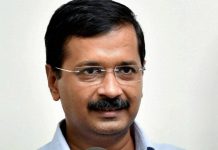 For most of us, when we seek tender loving care, we turn to our mothers, but when it’s illness ravaging our strength, it’s doctors from whom we seek a cure. Sometimes the medicine seems worse than the disease, but they, like mothers, are lifesavers in our midst. Did you ever wonder what to do when medical practitioners are not available when we need them the most. This is the case, majority of us will agree, when it comes to government hospitals, where common people approach when ailments start hurting their health. The reason is: There are not enough doctors.
For most of us, when we seek tender loving care, we turn to our mothers, but when it’s illness ravaging our strength, it’s doctors from whom we seek a cure. Sometimes the medicine seems worse than the disease, but they, like mothers, are lifesavers in our midst. Did you ever wonder what to do when medical practitioners are not available when we need them the most. This is the case, majority of us will agree, when it comes to government hospitals, where common people approach when ailments start hurting their health. The reason is: There are not enough doctors.
The latest Bombay High Court’s advice to the Maharashtra government may go a long way in dealing with the crisis situation in government hospitals. “Encourage private doctors to assist in civil hospitals across the state by way of charity so that poor patients can be benefited,” it suggested. At present, such initiatives are being taken only by a handful of doctors on voluntary basis. But the courts’ push may help the state governments to set strategy to get more private doctors involved in the civil hospitals.
Last year, the Uttar Pradesh government had sought proposals from director general (medical and health services) to rope in private doctors, including specialists, to treat patients at government-run district hospitals as well as community and primary health centres across the state. The move was aimed at ensuring proper and timely medicare to the sick at a time when the department was facing a shortage of around 7,000 doctors, including around 1,800 specialists, in the state. There is no update on the initiative since November 2017.
Karnataka, however, has led the way. In 2016, the state had come up with a plan to deal with acute shortage of doctors in the state. Private specialist doctors were given the option of working as “doctors on call” in government hospitals besides their private practice. Private doctors with postgraduate qualification in the southern state could work in government hospitals for two days in a week. The government, in turn, would give them an honorarium of `10,000 a month. They would also get consultation fee from the government on the basis of the number of patients they attend to.
Another way to cope with the rising demand for doctors in state-run hospitals is to fill the tens of thousands of positions that are lying vacant across the country for quite some time. In Uttar Pradesh, for example, there were around 17,000 odd sanctioned posts for doctors last year, against which only around 10,000 were appointed, while the remaining seats remained vacant. The figures may be different in different states but the situation remains the same. Almost every civil hospital in the country lacks enough human resources to look after the health of general public.
Injecting more doctors into the sector will also help reduce the shortage of medical practioners in the country. For that, the medical education should be made accessible to one and all qualified candidates at cheaper costs. Additional provisions need to made for economically weak students to make medical education affordable for them. The life savers in the making should be taught to deal their patients with compassion. After all money is not everything.
letters@tehelka.com













